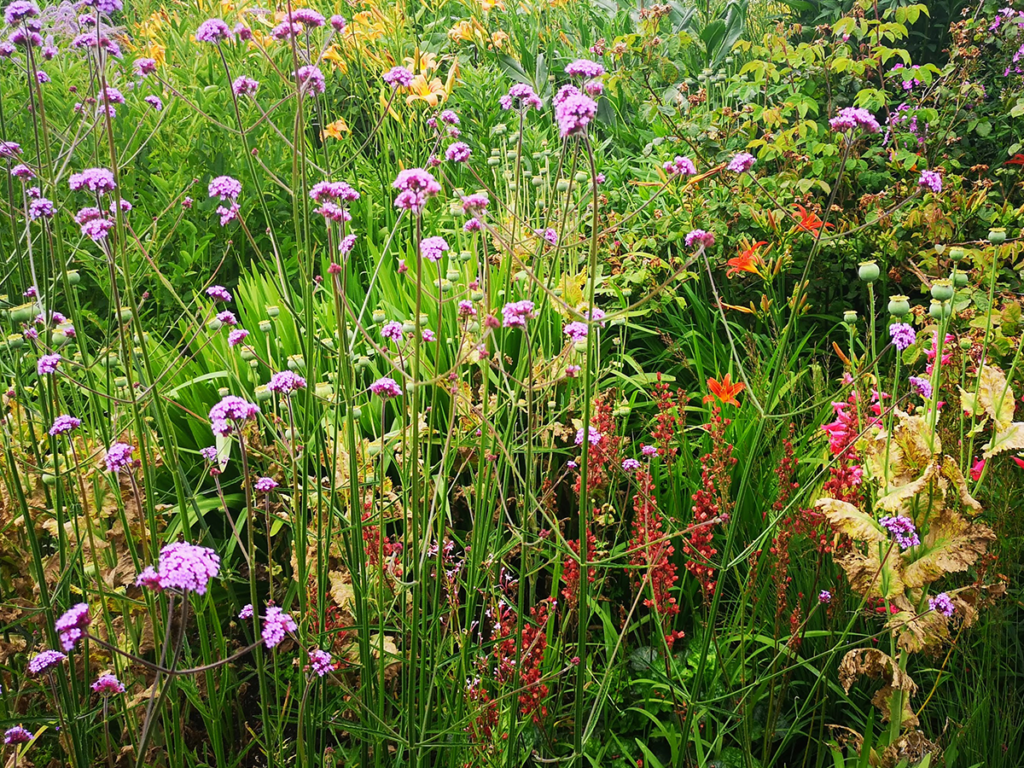
Embracing Sustainable Planting for Modern Gardens
In this blog, we’ll take a journey through the evolution of planting styles, from the classic designs of decades past to the revolutionary naturalistic movements pioneered by horticultural legends like Piet Oudolf. We’ll also dive into how contemporary designers like Nigel Dunnett and Noel Kingsbury are pushing the envelope further with sustainable planting practices. Whether you’re a seasoned gardener or just beginning your green-thumb journey, understanding these trends and techniques can help you create a garden that’s both stunning and sustainable.
A Look Back: The Planting Styles of the 70s and 80s
If you were gardening in the 70s and 80s, chances are your borders were dominated by shrubs. These hardy plants were the backbone of most garden designs, offering structure and year-round greenery. Perennials were often used sparingly, added as a bit of “froth” to soften the front of the borders. This approach was practical, low-maintenance, and reliable, but it didn’t leave much room for creativity or seasonal variation.
Of course, who could forget the infamous rockeries of that era? While some were beautifully executed, many ended up as weed-filled eyesores. The concept of creating miniature alpine landscapes was appealing, but without proper maintenance and thoughtful design, they quickly became problematic.
Another popular style during this period was the busy Cottage Garden aesthetic. Inspired by traditional English country gardens, these spaces were overflowing with flowers, herbs, and vegetables, creating a sense of abundance and charm. While visually delightful, they could be high-maintenance and often lacked a cohesive design strategy.
The Naturalistic Revolution: The 90s and Beyond
By the 1990s, gardening styles began to shift dramatically. A new movement known as naturalistic planting started to take root, particularly in The Netherlands and Germany. This style was all about embracing the beauty of nature, creating gardens that looked and felt like wild landscapes rather than manicured plots.
One of the early pioneers of this movement was Henk Gerritsen, who began experimenting with naturalistic designs as early as the 1970s. However, it was Piet Oudolf who truly brought this style into the mainstream. Oudolf’s work is nothing short of transformative, blending perennial grasses and bold plant groupings to create dynamic, ever-changing displays.
Piet Oudolf: A Visionary in Naturalistic Planting
Walking through a garden designed by Piet Oudolf is like stepping into a living painting. His use of grasses adds movement and texture, while his masses of perennials provide bold splashes of colour which are breath taking. But what makes his work truly special is its seasonal longevity. From early May through February, Oudolf’s gardens remain visually compelling, with seed heads and dried foliage adding interest even in the depths of winter.
Oudolf’s influence can be seen across Europe, America, and even South Korea, where he recently completed his largest project to date at the Taehwagang National Garden in Ulsan. His designs celebrate the natural cycles of growth and decay, offering a fresh perspective on what a garden can be.
The Sustainability Question: How Natural is Naturalistic Planting?
While Oudolf’s work is undeniably beautiful, it has also sparked important conversations about sustainability. Recently, I attended a course with Nigel Dunnett and Noel Kingsbury, two of the leading voices in sustainable planting in England. While they deeply admire Oudolf’s aesthetic, they raise valid questions about the environmental impact of such large-scale plantings.
To create these expansive naturalistic gardens, thousands of plants must be grown, often in greenhouses that require significant resources like water, heat, compost, and plastic pots. Once planted, these gardens require ongoing maintenance from dedicated teams of gardeners.
Dunnett and Kingsbury argue that while these gardens mimic nature in appearance, they may not always align with the principles of sustainable gardening. So, what’s the alternative?
The Rise of Sustainable Planting: Meadows from Seed
Dunnett and Kingsbury advocate for a different approach—one that’s both beautiful and eco-friendly. Their solution? Planting perennial meadows from seed. This method not only reduces the environmental footprint but also creates dynamic, ever-evolving landscapes.
One of the most famous examples of this approach is the Olympic Park for the London 2012 Olympic Games. The bold swathes of planting captivated visitors and showcased the potential of seed-grown meadows. These meadows were not only cost-effective but also low-maintenance and biodiverse, supporting a wide range of pollinators and wildlife.
Benefits of Seed-Based Planting
- Cost-Effective: Growing meadows from seed is significantly cheaper than purchasing thousands of nursery-grown plants.
- Low Environmental Impact: This method reduces the need for plastic pots, greenhouse resources, and transportation emissions.
- Biodiversity Boost: Seed-grown meadows support a diverse range of plant species, creating habitats for bees, butterflies, and other beneficial wildlife.
- Ever-Changing Beauty: Unlike static planting schemes, meadows evolve over time, with dominant species coming and going, offering a fresh look year after year.
Sustainable Planting in Smaller Gardens
While seed-based meadows are perfect for large public spaces, they’re not always practical for smaller gardens. However, that doesn’t mean you can’t embrace sustainable planting principles in your own backyard.
For more compact spaces, I recommend focusing on perennials and grasses that are long-lasting and low-maintenance. The key is to follow the classic gardener’s mantra: “Right Plant, Right Place.” By selecting plants that thrive in your garden’s specific conditions—whether it’s sun, shade, dry soil, or moist areas—you’ll create a resilient, sustainable garden that requires fewer resources.
Tips for Sustainable Planting in Small Gardens
- Choose Native Plants: Native species are well-adapted to your local climate and soil, reducing the need for watering and fertilizers.
- Limit Lawn Areas: Lawns are resource-intensive. Replace them with perennial borders, gravel gardens, or wildflower patches.
- Use Perennials and Grasses: These plants return year after year, reducing the need for replanting and minimizing waste.
- Incorporate Mulching: Mulching helps retain moisture, suppress weeds, and improve soil health.
- Collect Rainwater: Install rain barrels or water butts to conserve water and reduce reliance on mains supply.
My Take on Sustainable Planting
As a garden designer, my approach to sustainable planting is all about balance. I believe in creating gardens that are not only visually stunning but also environmentally responsible. That means choosing plants that will stand the test of time, using materials that are eco-friendly, and designing spaces that work with nature, not against it.
Whether I’m designing a naturalistic border inspired by Piet Oudolf or experimenting with seed-based meadows like Dunnett and Kingsbury, I always aim to create gardens that are as sustainable as they are beautiful. And, of course, I never forget the simple wisdom of placing the right plant in the right place.
Conclusion: The Future of Sustainable Planting
The evolution of planting styles over the decades reflects our growing awareness of the environment and the need for sustainability in all aspects of life, including gardening. From the structured shrub borders of the 70s to the dynamic meadows of today, we’ve come a long way in understanding how our gardens can make a positive impact on the planet.
As we move forward, sustainable planting will continue to shape the gardens of the future. Whether you’re inspired by the naturalistic designs of Piet Oudolf or the eco-friendly innovations of Nigel Dunnett and Noel Kingsbury, there’s never been a better time to embrace sustainable gardening practices.
So, why not start your own journey toward a more sustainable garden today? 🌿
